The Alaskan Klee Kai is a captivating breed, gaining popularity in various parts of the world. Known for its sharp intelligence and family-friendly demeanor, this dog is both charming and agile. Typically of small to medium stature, it boasts unique physical characteristics that set it apart. While it has made a significant mark in several countries, it holds a particular allure in the USA.
The Alaskan Klee Kai is a small to medium-sized dog: Known for its intelligence, alertness, and strong bond with its family.
Double Coat: They have a double coat that can be short to long and can come in various recognized colors. Regular grooming is necessary, especially during shedding seasons.
Intelligence and Training: While they are intelligent and quick learners, they can show an independent streak, making consistent training essential.
Physical and Mental Needs: They are active and require regular exercise to maintain their physical and mental health.
Important Considerations: Potential owners should be aware of the breed’s wariness towards strangers and some common health issues like hip dysplasia and eye problems.
Alaskan Klee Kai Breed – Quick Facts
| Feature | Description |
|---|---|
| Size | Small to Medium; Height: 13-17 inches (33-43 cm) |
| Weight Range | 10-20 lbs (4.5-9 kg); Slightly lighter for females |
| Predominant Colors | Black, Gray, Red, White |
| Fur Length and Type | Medium; Straight |
| Lifespan | 12-16 years |
| Activity Level | Moderate |
| Intelligence Level | High |
| Ease of Training | Average |
| Good with Kids | Yes, with supervision |
| Training Requirements | Standard |
| Known Health Issues | Hip dysplasia, thyroid problems, patellar luxation |
Physical Characteristics of the Alaskan Klee Kai
The Alaskan Klee Kai is a breed that stands out with its distinct physical features. Their height typically ranges between 13 to 17 inches, and they have a weight that varies from 10 to 20 pounds. Males are generally slightly heavier and more robust than females.
Their coat is of medium length, straight, and comes in a variety of colors, including black, gray, red, and white. This fur is not only beautiful but also functional, offering them protection from various weather conditions.
The head of the Alaskan Klee Kai is a defining feature. They possess a balanced muzzle that’s neither too long nor too short. Their ears stand erect, giving them a vigilant look.
Their eyes are keen, often reflecting their intelligent and curious nature. Some Alaskan Klee Kais may even have heterochromia, where each eye is a different color.
Unique markings are another characteristic of this breed. Some might have facial masks, while others could display distinct color patterns on their body.
Observing them move is a treat: their standard posture exudes confidence, and their gait is smooth and agile, reflecting their energetic personality.
Alaskan Klee Kai Temperament & Personality
The Alaskan Klee Kai’s temperament is as captivating as its appearance. This breed is generally energetic, yet they can also display calm moments, especially when they are in familiar surroundings.
When interacting with people, the Alaskan Klee Kai is often affectionate and loyal. They build strong bonds with their families and are usually wary of strangers. This makes them excellent watchdogs.
With other dogs and animals, their behavior can vary. Some are friendly and playful, while others might be more reserved. Proper socialization from a young age can help ensure they are more accepting of other animals.
Their intelligence shines through in their learning capability. They are quick learners, often grasping new commands with fewer repetitions than some other breeds. However, they also have a streak of independence, which means they might sometimes choose to do things their way.
An Alaskan Klee Kai’s energy levels are moderate. Regular exercise is essential to keep them physically and mentally stimulated.
This breed is adaptable and can thrive in various living situations. However, they are especially suited for family life. They generally get along well with children, but supervision is advisable, especially with younger kids.
What Does The Ideal Home For an Alaskan Klee Kai Look Like?
The Alaskan Klee Kai, with its vivacious and spirited nature, requires a home that can accommodate its physical and emotional needs.
Space is essential for them. A house with a medium to large backyard offers them the freedom to run and play. However, it’s crucial to have secure fencing. Their curious nature might lead them to explore, and a secure environment ensures their safety.
Families that consider bringing an Alaskan Klee Kai into their lives should be prepared for an active companion. They fit well in homes where there’s a balance of activity and relaxation.
Families with children can find in them a playful mate, but it’s essential to teach kids how to interact respectfully with the dog. The breed can also coexist with elderly members, provided that their energetic nature is channeled correctly.
Exercise is paramount for the Alaskan Klee Kai. Beyond the backyard, they benefit from daily walks and occasional trips to parks. They enjoy open spaces where they can run off-leash, but always in a secure area. Digging is a common activity, so providing them with a designated spot can save gardens from their enthusiastic paws.
When considering the home environment, it’s essential to remember their thick coat. While they can handle colder temperatures quite well, extreme heat can be challenging. Offering them a cool, shaded spot during hot days and ensuring they have access to fresh water is vital.
Can Alaskan Klee Kai be left alone?
The Alaskan Klee Kai is known for its attachment to its family. When left alone for extended periods, they might experience separation anxiety.
It’s not uncommon for them to become restless or even indulge in destructive behaviors if they feel isolated. However, with proper training and gradual acclimatization to solitude, they can learn to be independent for short durations. It’s always a good idea to provide them with toys or activities to keep them engaged when alone.
Ideal Owner for an Alaskan Klee Kai
The Alaskan Klee Kai, with its unique blend of energy and intelligence, requires an owner who understands and respects its needs. While they can be a good match for both first-time dog owners and seasoned dog handlers, it’s beneficial if the owner is familiar with breeds of similar temperament and energy levels.
An active lifestyle is a plus for Alaskan Klee Kai owners. Whether it’s daily walks, hikes, or regular play sessions in the yard, these dogs thrive when they’re physically engaged. They aren’t just suited for active individuals but also for families that can provide them with varied activities throughout the day.
Training is a crucial aspect of raising an Alaskan Klee Kai. They are intelligent and often eager to learn, but they also have an independent streak. Consistent, positive reinforcement-based training methods work best. Owners should be prepared to invest time in training sessions, ensuring that they are both fun and educational for the dog.
Beyond training, bonding is essential. The ideal owner will spend quality time with the Alaskan Klee Kai, fostering a deep bond based on trust and mutual respect. This includes not just play and training, but also quiet moments of relaxation and grooming sessions, which the breed requires regularly.
Are Alaskan Klee Kai good with kids?
The Alaskan Klee Kai, in general, gets along well with children. They are playful and can be gentle playmates. However, due to their size and sometimes wary nature, it’s essential to ensure that interactions between younger children and the dog are always supervised. Teaching children how to approach and play with the dog respectfully ensures positive experiences for both parties.
Are Alaskan Klee Kai aggressive?
The Alaskan Klee Kai is not inherently aggressive. However, like any breed, they can display protective behaviors, especially if they perceive a threat to their family or territory. Proper socialization from a young age is vital to ensure they are well-adjusted and react appropriately to various stimuli. While they might be wary of strangers, with proper introductions and positive experiences, they can learn to be more accepting.
How Popular Is This Breed?
The Alaskan Klee Kai has seen a rise in popularity over recent years. This breed, with its striking appearance and captivating personality, has won the hearts of many dog enthusiasts. In the USA, they are particularly favored, with many households choosing them for their adaptability and family-friendly nature.
Historically, the Alaskan Klee Kai was developed in Alaska, and its popularity initially grew in that region. Over time, as more people discovered the breed, its appeal spread to other parts of the country and even internationally. Several celebrities have also been spotted with Alaskan Klee Kais, further boosting their popularity.
However, it’s not just about trends. Many families and individuals appreciate the Alaskan Klee Kai for its manageable size, intelligence, and compatibility with various lifestyles. Their unique looks, coupled with their playful yet alert demeanor, make them a sought-after breed in many regions.
Alaskan Klee Kai Grooming
Grooming is an integral aspect of Alaskan Klee Kai care. Their medium-length coat requires regular maintenance to keep it looking its best and ensuring the dog’s comfort. Brushing several times a week helps prevent matting and removes loose fur. This routine not only keeps the coat healthy but also provides an opportunity for owners to check for any skin issues or parasites.
While their coat is relatively low-maintenance, it’s essential to use the right tools. Brushes that can reach the undercoat, like a slicker brush or an undercoat rake, are beneficial. When it comes to bathing, it’s not required frequently. However, when you do bathe them, it’s advisable to use dog-specific shampoos and conditioners that cater to their coat type.
Professional grooming might be needed occasionally, especially if the coat becomes too tangled or if the dog gets into something messy. While many owners manage grooming at home, a professional touch can ensure that the coat is evenly trimmed and looks its best.
One challenge with grooming the Alaskan Klee Kai can be their sensitivity. Some might be wary of the grooming process, especially when it comes to tasks like nail trimming. With patience, positive reinforcement, and regular grooming sessions, they can become more accustomed to the routine.
Do Alaskan Klee Kai shed?
Yes, the Alaskan Klee Kai does shed. They typically have a shedding season in the spring and fall, where they shed their undercoat. Regular brushing during these times can help manage the loose fur and reduce the amount of hair around the home. It’s also beneficial for the dog, as brushing promotes better skin health and offers comfort during the shedding process.
Alaskan Klee Kai Diet: What Do They Eat?
The Alaskan Klee Kai’s diet is crucial for its overall health and well-being. This breed requires a balanced intake of proteins, fats, and carbohydrates. High-quality dog food, whether it’s kibble, wet food, or a raw diet, should be the mainstay of their nutrition. It’s vital to ensure the food chosen aligns with their age, weight, and activity level.
Some Alaskan Klee Kais might have allergies or food sensitivities. Common culprits can include certain grains or specific protein sources. It’s essential to monitor your dog for any adverse reactions, such as skin irritations or digestive issues, and consult with a vet if you suspect a food allergy.
As they transition from puppyhood to adulthood and then into their senior years, their dietary needs can change. Puppies require more protein and fat to support their growth, while seniors might need fewer calories to prevent weight gain.
How to Feed an Alaskan Klee Kai
Feeding an Alaskan Klee Kai requires consistency and awareness of their specific needs. Establishing a routine is beneficial. Feeding them at the same times daily can help regulate their digestive system and prevent overeating. The type of bowl used can make a difference. Opt for a shallow, wide bowl that allows them to eat comfortably without straining their neck.
While free-feeding, or leaving food out for them to eat whenever they choose, might work for some dogs, it’s not recommended for the Alaskan Klee Kai. They benefit from portion-controlled meals. This approach prevents overeating and helps maintain a healthy weight.
Water is essential. Ensure they have access to fresh water at all times. Clean their water bowl daily to prevent bacterial growth.
Health Considerations
The Alaskan Klee Kai is generally a healthy breed, but like all breeds, they can be prone to certain health issues. Understanding these potential problems helps owners provide the best care for their dogs.
Hip dysplasia is one concern. It’s a condition where the hip joint doesn’t develop correctly, leading to arthritis over time. Regular vet check-ups can help monitor for any signs of this condition, and early intervention can improve the dog’s quality of life.
Eye issues, such as progressive retinal atrophy, can also be a concern. This condition affects the retina, leading to vision loss. Regular eye check-ups are essential to catch and address any problems early on.
Skin issues, often manifesting as allergies or sensitivities, can be another area of concern. These can arise due to environmental factors, certain materials, or dietary components. Regular grooming and monitoring can help identify any skin changes, and dietary adjustments can sometimes alleviate symptoms.
The average lifespan of the Alaskan Klee Kai is around 12 to 16 years. As they age, they might face other health challenges, like arthritis or heart conditions. Regular vet visits, a balanced diet, and moderate exercise can support them through their senior years.
How much exercise do Alaskan Klee Kai need?
The Alaskan Klee Kai is an active and energetic breed. Regular exercise is essential for their physical health and mental stimulation. On average, they benefit from at least 30 minutes to an hour of activity daily. This can be divided between walks, play sessions, and other physical activities.
Walks are a staple, providing not only physical exercise but also mental stimulation as they explore their surroundings. Play sessions, whether it’s fetch or tug-of-war, can help burn off excess energy and strengthen the bond between the dog and the owner.
Alaskan Klee Kai Training
Training is a fundamental aspect of raising a well-adjusted Alaskan Klee Kai. Starting early, ideally during puppyhood, sets the foundation for a positive relationship between the dog and the owner. Basic commands such as “sit,” “stay,” and “come” are essential and help ensure the dog’s safety.
The Alaskan Klee Kai is an intelligent breed, keen to learn and eager to please. However, they can sometimes display an independent streak. Consistency and positive reinforcement are key. Rewards, whether in the form of treats, praise, or play, encourage desired behaviors.
Socialization is equally vital. Exposing the Alaskan Klee Kai to various environments, animals, and people in a controlled manner helps foster positive social behaviors. Regular encounters with different situations reduce the chances of fear or aggression later in life.
Some Alaskan Klee Kais might exhibit breed-specific behavioral issues, such as being wary of strangers or displaying prey drive. Recognizing these tendencies and addressing them through training and environmental adaptations is essential.
For those looking to challenge their Alaskan Klee Kai further, advanced training opportunities exist. Agility courses or even service dog training can be suitable for this breed, given their intelligence and agility.
Housebreaking and establishing house manners are also crucial. With patience, consistency, and understanding the breed’s specific needs, training an Alaskan Klee Kai can be a rewarding experience for both the dog and the owner.
Are Alaskan Klee Kai easy to train?
Training an Alaskan Klee Kai can be both rewarding and challenging. Due to their intelligence, they are quick learners. They often pick up commands faster than some other breeds. However, this intelligence can sometimes lead to stubbornness, especially if they sense inconsistency or uncertainty from the owner.
While they are eager to please, their independent nature means that sometimes they might want to do things their way. It’s essential for the owner to establish themselves as the leader early on, using positive reinforcement techniques. Harsh corrections or punishments are not effective and can harm the bond between the dog and the owner.
Are Alaskan Klee Kai smart dogs?
Yes, the Alaskan Klee Kai is notably intelligent. They possess a sharp cognitive capability that makes them quick learners. Their problem-solving skills are often evident, whether they’re figuring out how to get a toy from a challenging spot or navigating obstacles. Their learning speed is typically faster than many other breeds, allowing them to pick up new commands or tricks in a short span.
In addition to their ability to learn commands, they also exhibit a keen awareness of their surroundings. They are observant and often pick up on subtle cues, whether from their environment or their owner. This aptitude means they can sometimes be a step ahead, anticipating what’s coming next.
What are the drawbacks of Alaskan Klee Kai?
Every breed has its challenges, and the Alaskan Klee Kai is no exception. One behavioral challenge typical to this breed is their wariness of strangers. While they bond closely with their family, they can be reserved or even aloof with unfamiliar people. This trait requires early and consistent socialization to ensure they’re comfortable in various situations.
Health and genetic issues, like the previously mentioned hip dysplasia and eye problems, can be concerns for potential owners. These conditions can lead to higher veterinary care expenses and can be emotionally taxing for the owner.
Their grooming requirements, especially if they have a longer coat, can be seen as high-maintenance. Regular brushing and occasional baths are necessary to keep their coat in good condition. Additionally, their double coat means they can shed quite a bit, especially during seasonal changes.
The Alaskan Klee Kai’s energetic nature means they have high exercise and activity needs. This requirement might be challenging for individuals with a more sedentary lifestyle or those living in apartments without easy access to outdoor spaces.
Lastly, their intelligence, while a strength, can also be a drawback. Without proper mental stimulation, they can become bored, leading to undesirable behaviors like digging, barking, or chewing. Engaging their minds and providing them with challenges is crucial to prevent these issues.
Popular Alaskan Klee Kai Mixed Breeds
Mixed breed dogs have gained popularity, combining traits from two pure breeds. Mixing the Alaskan Klee Kai with other breeds often aims to enhance certain temperamental, health, or aesthetic characteristics.
One common mix is the Alaskan Klee Kai and the Siberian Husky. This mix often results in a dog that retains the smaller size of the Klee Kai but has the striking appearance and markings of the Husky.
Another mix is with the Pomeranian, resulting in a smaller, fluffy dog with the vivacity of the Pomeranian and the intelligence of the Klee Kai.
When the Alaskan Klee Kai is mixed with the Shiba Inu, the result is a dog that often has the boldness and independence of the Shiba but the more manageable size of the Klee Kai.

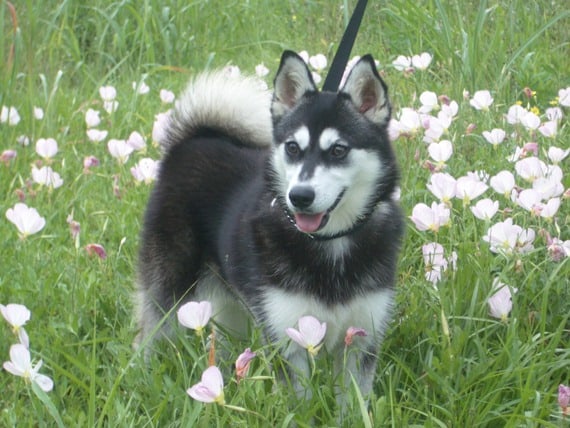
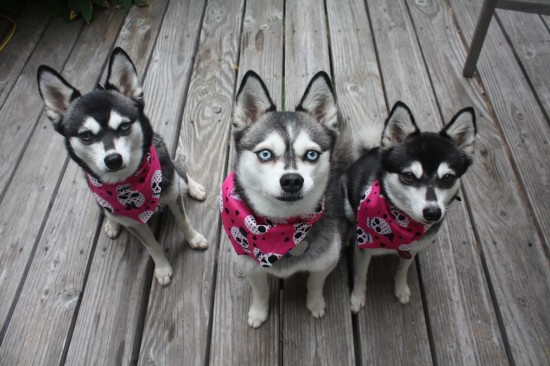
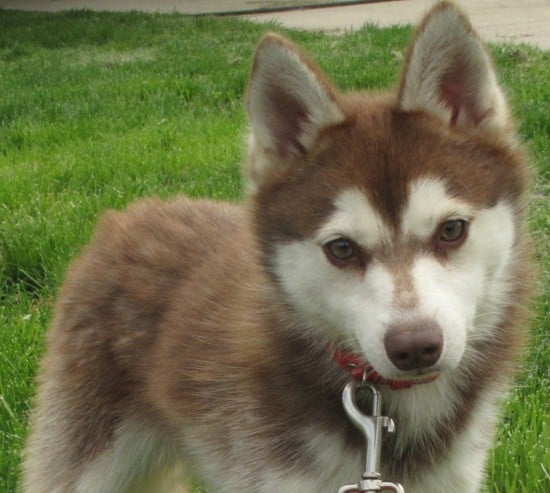
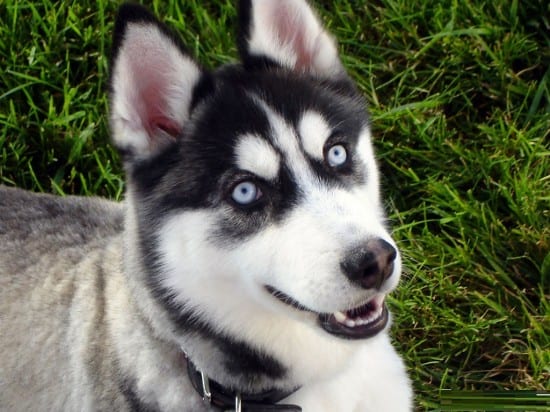
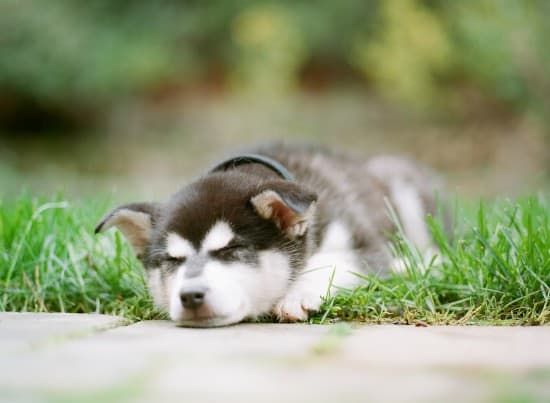
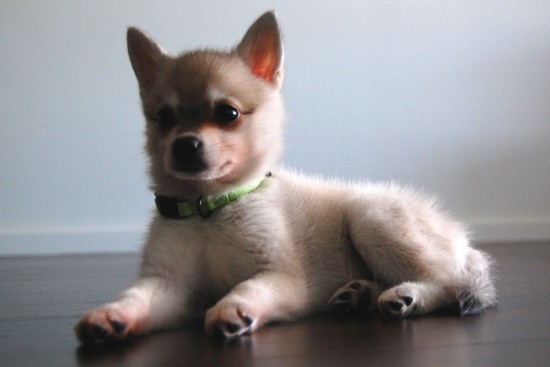
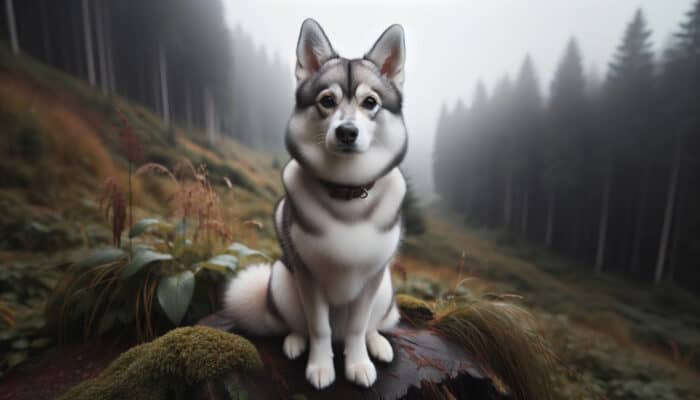
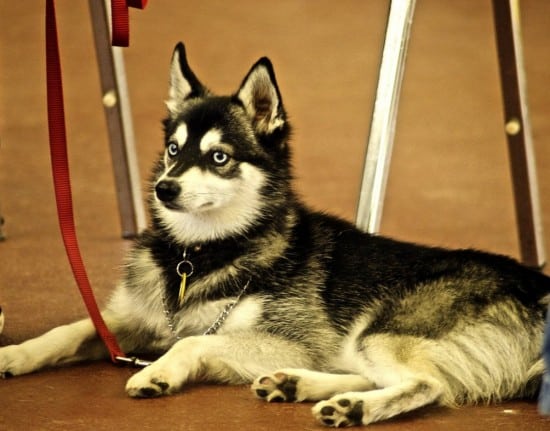

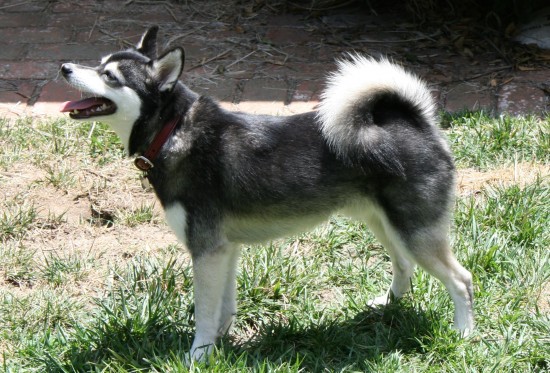
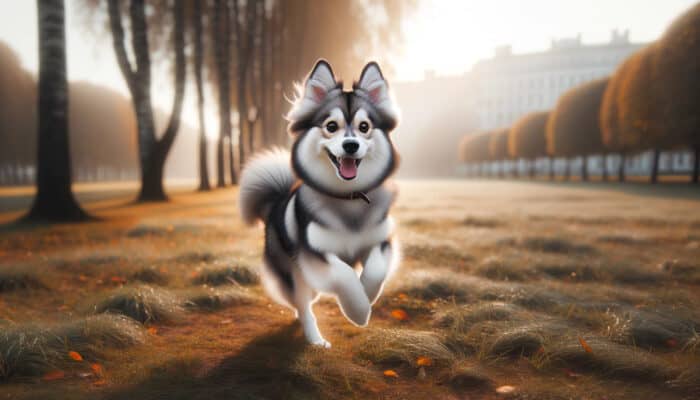
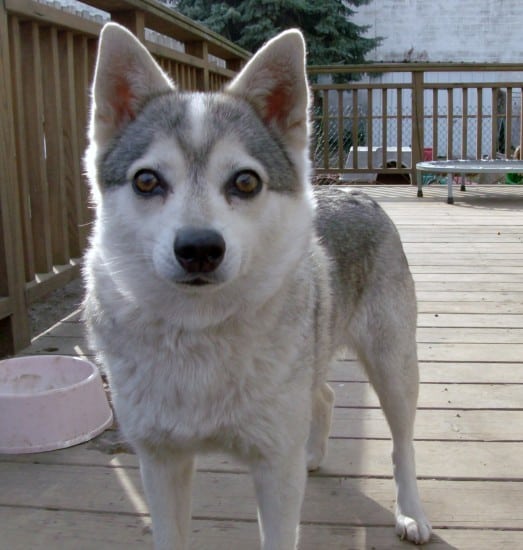
I’m interested in a klee kia